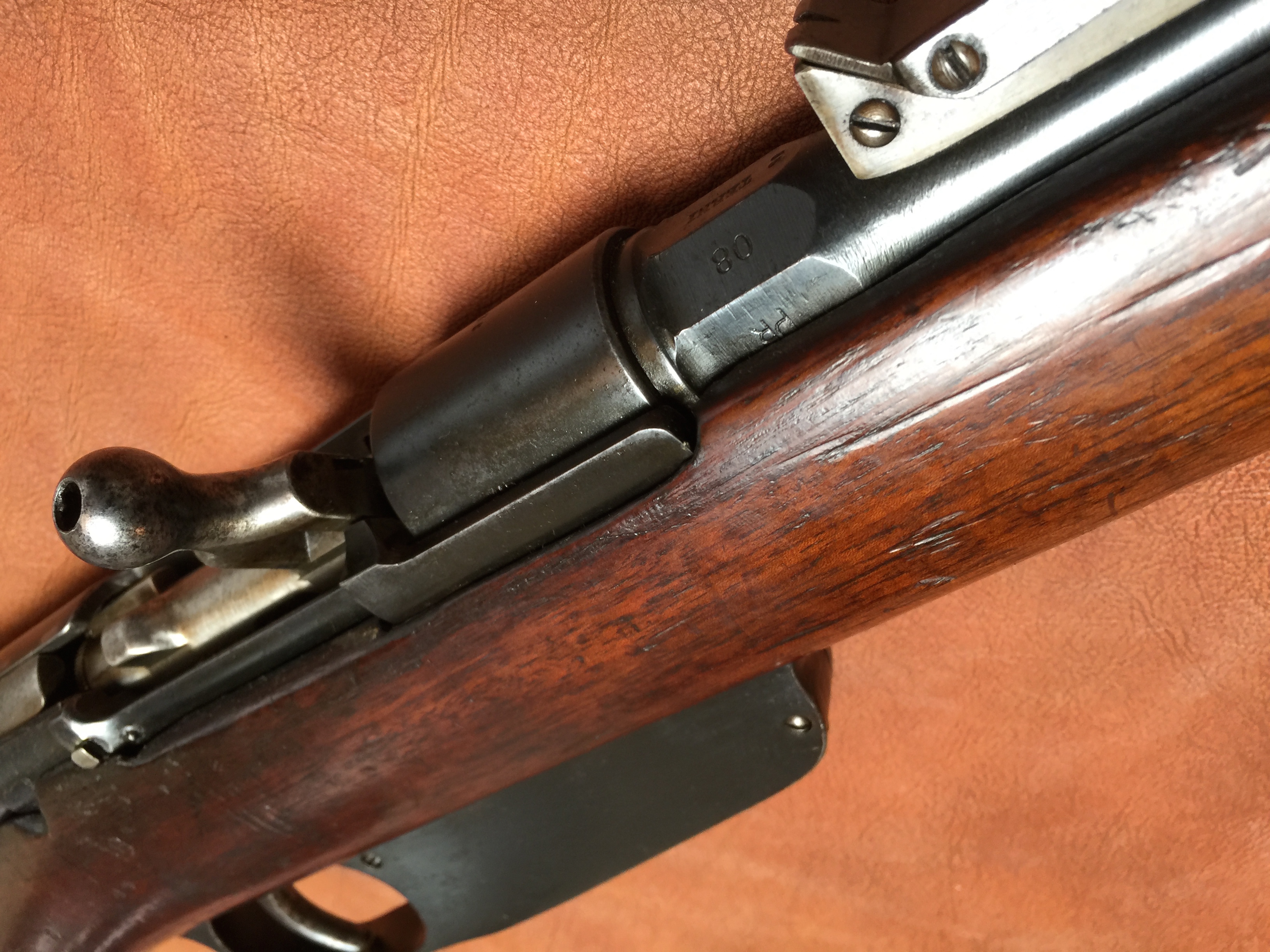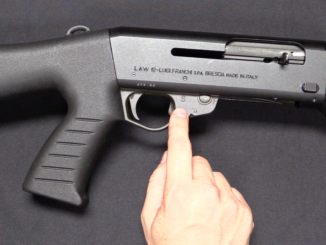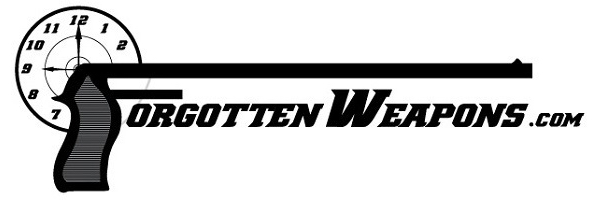The Mateba 6 Unica is the culmination of a series of revolver development by Italian designer Emilio Ghisoni (1937-2008). The Unica 6 is one of only a few self-cocking revolvers to see commercial production and sales (the other two being the Union and the Webley-Fosbery). It was available in .357 Magnum, .44. Magnum (like today’s example), and .454 Casull. All three could be used with the associated Special ammunition with a recoil spring swap. In addition, the Unica 6 fired from the bottom chamber of its cylinder, which allowed it to use an open frame design with powerful magnum cartridges (Ghisoni was also involved in the other common revolver with this feature, the Chiappa Rhino).
Related Articles

Conversion
Terni M91 Carcano Semiauto conversion (Video)
This rifle started out its life an a normal M91 Carcano long rifle, before being converted into an experimental self-loader by the Terni Arsenal. Rather than adding a gas piston to the barrel, Terni engineered […]

Submachine Guns
Italian FNA-B43 Submachine Gun
The FNA-B43 (Fabbrica Nazionale d’Armie) was developed in Brescia, Italy during World War II. The Beretta M38 series of submachine guns were serving very well, but the volume of guns demanded by the war allowed […]

Shotgun
Franchi LAW12 – Like the SPAS-12, but Semiauto Only
The shotgun in this video is coming up at auction here. The LAW-12 was a sister product to the much better-known SPAS-12 shotgun made by Franchi in the 1980s. The SPAS was a selectable pump […]

Patent pertaining to this weapon US4712466A Semiautomatic operation revolving cylinder pistol
https://patents.google.com/patent/US4712466A/en
It does directly mention WEBLEY-FOSBERY revolver and show that one of objectives of Emilio Ghisoni to eliminate drawback present in it, namely need to use 2nd hand after misfire.
“(…)It was available in .357 Magnum, .44. Magnum (…), and .454 Casull.(…)”
What was mass of each version (where version should be understand as any available cartridge, barrel length combination)?
http://modernfirearms.net/en/handguns/double-action-revolvers/italy-double-action-revolvers/mateba-model-6-unica-eng/ claims
Weight unloaded 1250 g and more
which logically should describe smallest cartridge (.357 Magnum) and shortest barrel (76 mm), but seems pretty high when compared to e.g. Smith & wesson model 19 classic which use .357 Magnum cartridge and has longer barrel (4.25″) weight noticeably less “37.2 Ounces” that is around 1050 g.
A more correct comparison would be to the N-Frame Smith and Wessons. The Model 19 is a K-frame, and that frame was originally designed for .38 Colt (pre-Special) in 1899.
The Model 19 (.357) and Model 15 (.38 Special) are only really distinguishable from each other because the 19 has a full-length shroud for the ejector rod, while the 15 has just the forward spring-plunger anchor boss as on the Model 10. Both weigh about 38 ounces unloaded, vs. about 46 oz. for the Model 29 (.44 mag.), 44 oz for Model 25 (.45 Colt), 47 oz. for Model 57 (.41 mag), and 49 oz for Model 27 or Model 28 (.357), assuming 6″ (15.5cm) barrels on each.
You may notice that the larger the bore, the lower the empty weight. Because more metal has to be removed from both chambers and barrel for the larger-diameter cartridges.
As such, I think you’ll find that (1) the Unica revolvers’ weights are in line with those of N-frame Smith and Wessons in the same calibers, and (2) the larger-bored revolvers will weigh less, as with the Smith and Wessons.
clear ether
eon
I did consulted MANUALE DI ISTRUZIONE available at https://ia800907.us.archive.org/1/items/strategic_intelligence_network/weapons/firearms/manuals/mateba_6unica_text.pdf
it does reveal only mass of .357 Magnum variant with 4 inch barrel, which is 1,27 kg.
Interestingly it does also enumerate 4 cartridge types:
44 Rem. Magnum
357 Mg.
454 Casull
30-357 AeT
Was last variant actually made? Was it released to market? Why they elected to use such cartridge?
The .38 Special in black powder was introduced by Smith & Wesson in 1898, and they released their first revolver for that cartridge in 1899 – what we now call the K-frame.
I wondered when Ian put his finger up alongside the cylinder, and when he yelped I was afraid he’d been bit by the cylinder gap, glad he just got smacked as the cylinder rotated.
Left channel only audio is very annoying as I blew my left speaker on the laptop during a bagpipe tune binge, so I finally dug out the headphones.
good god. never noticed how ginormous those things are
i remember when CDNN had a bunch of these, all calibers and barrel lengths. i really wanted to buy one but couldn’t afford to.